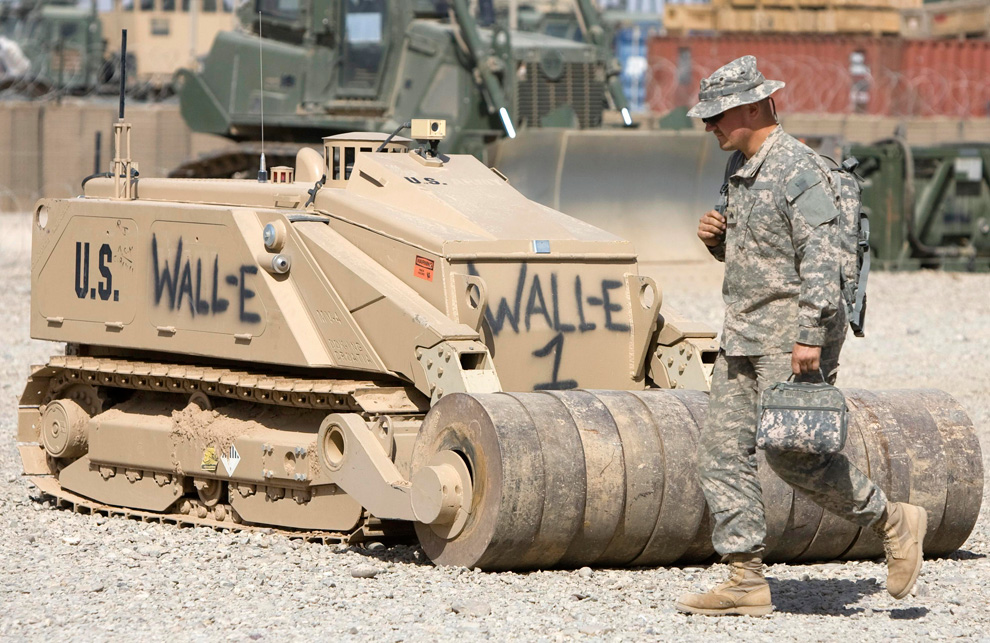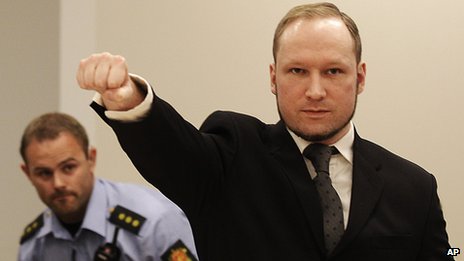On February 4, 2002 the CIA, for the first time, unleashed a Predator drone to conduct a targeted killing. Since then, robotics has become an extension of human military personnel’s capabilities in practically every way, from pack mules, to bomb detection, robot boat swarms and unmanned spacecraft.
As early as World War II the U.S. Navy experimented with guiding bombers with crude remote control systems to target seemingly impenetrable, deep bunkers. Post- WWII this early idea of drones was left on the back burner as a result of the development of cruise missiles. It was not until the need for surveillance increased and the drastic improvement of computer and electronic systems during the 1980’s and 1990s the military renewed its interest in drones.
In the beginning, drones became widely used for strictly information gathering missions. It was not until post-9/11 that the CIA and the military jointly worked on arming unmanned drones. Since then, R&D investments into drone technology has skyrocketed to a point where military procurement has changed from a focus on developing the standard service rifle to the development of standard service drones.
An example of this increasing “robotization” of military force was the testing of small ground and air unmanned assets for the purpose of detecting Improvised Explosive Devises (IEDs) in road culverts by the Army Research Lab and Joint IED Defeat Organizations (JIEDDO) between September 29 and October 10 2014. This “Culvert Denial Challenge” was created in response to this exact problem being encountered by NATO and Afghan forces in Afghanistan.

A total of 10 vendors were invited to participate in the surveillance portion of the challenge, with another 10 for a separate inspection challenge.
It is such projects that expose many of the positives associated with the increased involvement of the technology sector in meeting military needs. It bolsters the tech industry and economy as a whole, provides military funding to private industry and educational institutions, and in the end achieves the goal of increasing the safety of our men and women of service.
The U.S. Navy has been one of the largest proponents of greater robotics use. In recent tests, the U.S. Office of Naval Research (ONR) conducted a “swarm exercise”, by encircling an enemy vessel with five Unmanned Surface Vessels (USVs). The Navy hopes to utilize this technology in the future to defend flotillas of ships or attack suspected enemies autonomously. There have also been recent sea tests of the newest Fire Scout reconnaissance drone, a drone built on a helicopter platform, which is able to track and decode the roll and pitch of the surface it flies over.

In another recent naval exercise, the 2014’s Rim of the Pacific Exercise (RIMPAC), the U.S. Marine field-tested, for the first time, the Legged Squad Support Systems (LS3). Designed by Boston Dynamics and funded by the US Defense Advanced Research Projects Agency (DARPA), the LS3 is something of a robotic mule designed to follow an operator on foot while carrying heavy loads of supplies. During the exercise the LS3 joined some 25,000 human personnel in Hawaii, carrying 400lbs of gear. Despite being a robot the LS3 seamlessly fit in with its human operators who reportedly viewed it as a dog or other pet. Julie Carpenter, a robotics consultant cited this as normal behavior of soldiers working with robots. Carpenter was also quick to cite this as one of the predominant concerns with robots on a battlefield however. Despite soldiers’ recognition of a robot as a tool, reports and interviews indicate operators’ interactions with robots can be slightly human and/ or follow similar patterns to interactions with loved pets. Affection and attachment can affect decision-making with regard to ordering someone, or in this case something to conduct a specified task.
With this huge leap forward in military technological advances, questions arise on whether robotics makes warfare “too easy”. There is the obvious advantage of drone strikes minimizing collateral damage as it is a far more targeted form of killing, but it is also a far more removed form of killing. This could seem asp positive, as it implies separation between the killer and the killed thus alleviating guilt. However, such reduction of guilt and near-elimination of risk to personnel, may lead to a greater propensity towards warfare in international political relations.

Trust issues over the information gathered by drones and the hidden purpose for certain drone technologies are just a few more of the many publicly raised questions. For instance, there is the relatively opaque information about the X-37B, the U.S. Air Force’s new space drone. The only portion of the Boeing-made craft’s mission made public is that it’s been testing reusable spacecraft technologies, but otherwise the X-37B’s recent 22-month mission in earths orbit is a complete mystery.
For humanity to truly understand the implications of new drone technologies, there must be a greater recognition of the possible pros and cons of this new development. Otherwise, humanity walks blindly into uncharted waters.




